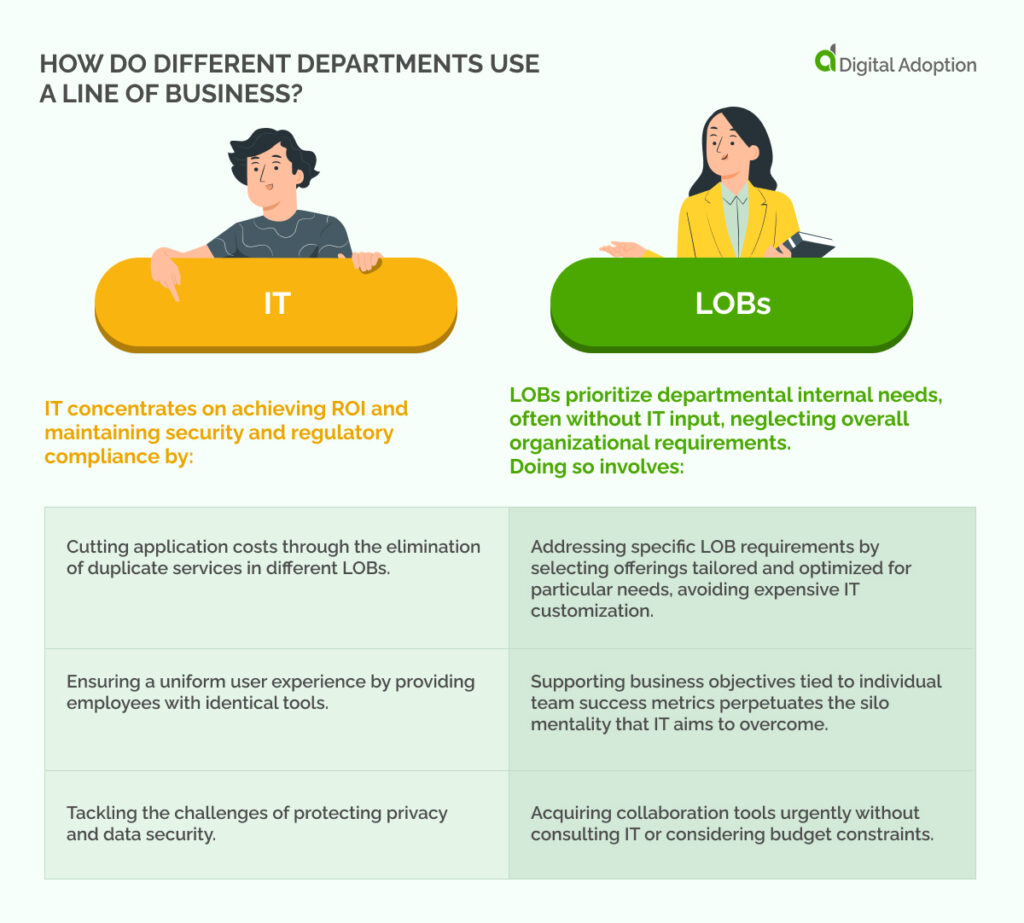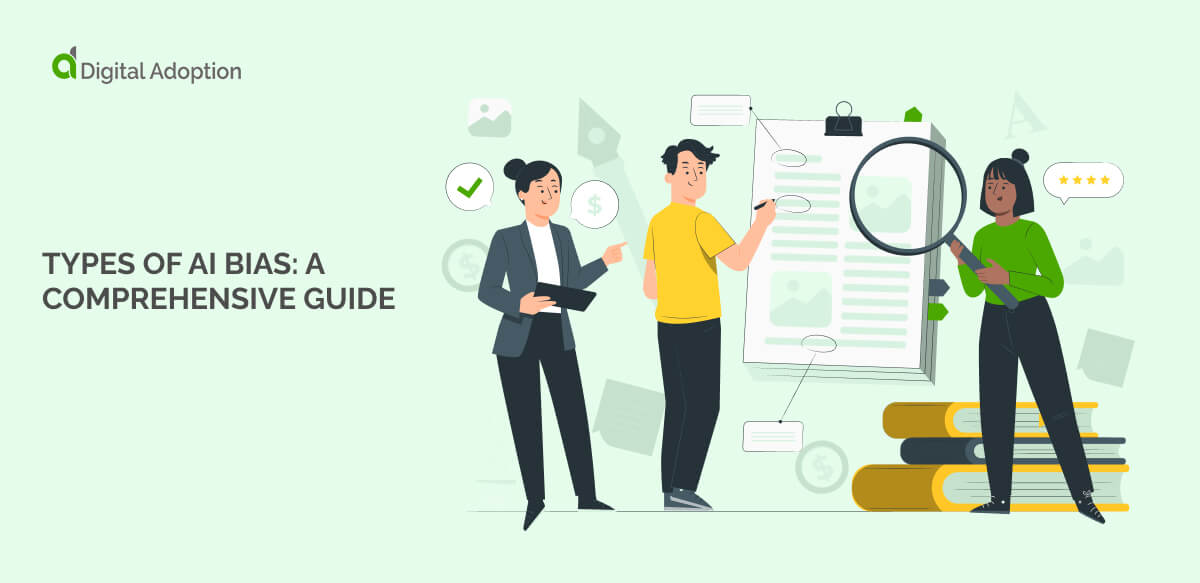Line of business (LOB) refers to a specific industry or product segment that a company operates in. It is a corporate subdivision focusing on a single product or family of products.
It is easy to overlook what a line of business is and what it is used for, as it is a fundamental business term.
However, knowing that a line of business (LOB) allows companies to separate their products into markets for customers to purchase them easily is an effective way to ensure you maintain focus when aiming for product-led growth.
Knowledge of a line of business is especially significant for the success of 33.2 million small businesses in the US, contributing to 99.9% of the business in the country.
We will help you understand what a line of business is with examples via the following topics:
- What is a line of business?
- Why is a line of business important?
- How do different departments use a line of business?
- Line of business examples
What is a line of business?

A line of business (LOB) is a product or service a company offers to serve a specific customer need. A bank, for example, provides LOBs to serve consumers’ financial needs, such as loans, overdrafts, and mortgages for companies of all sizes and individuals who require capital.
For businesses of any size, it’s helpful to consider LOBs for many reasons, which we will discuss next.
Why is a line of business important?

A business line is important to any business providing products or services to clients, mainly when a company has multiple LOBs providing many lines of similar products.
There are four main reasons that LOBs are helpful in business:
- Improves business agility.
- Integral to business strategy.
- Optimizes customer experience transformation.
- Promotes growth.
Through product or service life-cycle management, a line of business maintains the journey from start to finish for each item. LOBs allow you to oversee high-level collaborations that initiate processes where shared services take charge of more specific tasks.
As the product or service progresses through modifications and adaptations, life-cycle stages will be integral to these transformations to varying extents.
The value stream management of each Line Of Business (LOB) includes specific service units for its products or services.
At the uppermost level, these customized service units join up with others in a way that either directly or indirectly involves shared services to manage the thorough assignments.
LOBs are key to successful product and service development, whatever sector the product is developed for.
Various customers use the same LOB differently, meaning companies must develop different products within the same LOB.
For example, the insurance required by a large enterprise would be different from the needs of a small homeowner, though the products would be similar despite serving different needs.
How do different departments use a line of business?
Some large enterprises use ‘line of business’ (LOB) as a synonym for corporate division to decide how different departments meet customers’ needs.
Enterprises need to define the collaboration priorities and drivers for LOBs in each department to ensure they meet customer needs collaboratively and effectively.

- IT concentrates on achieving ROI and maintaining security and regulatory compliance by:
- Cutting application costs through the elimination of duplicate services in different LOBs.
- Ensuring a uniform user experience by providing employees with identical tools.
- Tackling the challenges of protecting privacy and data security.
LOBs prioritize departmental internal needs, often without IT input, neglecting overall organizational requirements.
Doing so involves:
- Addressing specific LOB requirements by selecting offerings tailored and optimized for particular needs, avoiding expensive IT customization.
- Supporting business objectives tied to individual team success metrics perpetuates the silo mentality that IT aims to overcome.
- Acquiring collaboration tools urgently without consulting IT or considering budget constraints.
Line of Business Examples

There are several lines of business, but below, we will focus on the three most popular: retail electronics, banking, and insurance.
Line of business: Retail electronics
Electronics retailers are concerned with the retail LOB. Examples of products under this LOB include:
- Mobile Devices.
- Wearables.
- TVs, Set Top Boxes, Monitors.
- Laptops, Tablets, Computers.
- Appliances & White Goods.
- Computers, Printers, Scanners.
Line of business: Banking
The main LOB for banking is finances. Products and services under this LOB relate to a particular customer transaction involving money management or borrowing or could produce additional income for customers, such as:
- Mortgages, overdrafts.
- Credit cards.
- Mobile route accounting.
- Forms of credit and loan programs.
- Real estate investments.
- Corporate, small business, and personal bank accounts.
Line of business: Insurance
For the insurance industry, services are the primary LOB, and services offered within this are:
- Life insurance.
- Health insurance.
- Disability insurance.
- Property and casualty insurance.
- Commercial business insurance.
Offer the right LOBs for your organization
Crafting the right LOBs for your organization requires a strategic blend of addressing specific departmental needs, aligning with overall organizational goals, and fostering collaboration.
Tailoring offerings to optimize functionality without excessive customization and promoting a unified approach can enhance efficiency and break down silos, propelling your organization forward.
FAQs
How do I set up a line of business?
To set up a line of business, you must first define the sector you’re working within. If you provide loans, your LOB is finance. If you sell items online, your LOB is retail.
Once you have defined your LOB, research existing customer needs and develop a product to fulfill these needs. The key to setting up a LOB is to define your target market to ensure you fulfill their need.
What is another word for line of business?
There are many other words for a line of business.
Examples include line, product line, line of products, branch, sector of industry, branch of industry, line of business, economic sector, field, field of operation, line of merchandise, business line, trade, line of business, and branch of business. They all mean a line of business.
What are the five lines of insurance?
Every individual should have access to the five lines of insurance, which are:
- Home or property insurance.
- Life insurance.
- Disability insurance.
- Health insurance.
- Automobile insurance.
Everyone should have these five types of insurance to protect themselves.













